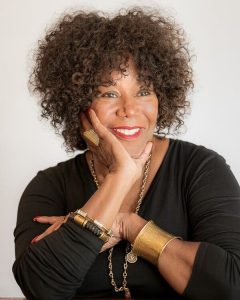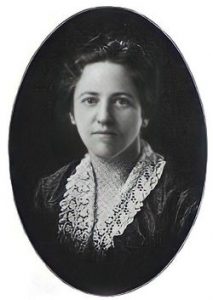Leah Chase
Leah Chase, New Orlean’s Queen of Cuisine. A beloved figure throughout the community for all her contributions. She played a major, but almost secret, role in the Civil Rights movement when Dr. Martin Luther King Jr. and his Freedom Riders came to New Orleans to meet with the Baton Rouge civil rights members to learn more about their bus boycotts and their successes. While she didn’t run the meetings herself, she hosted them and fed every individual there, playing an important supporting role in the bigger picture.

Chef Leah Chase stands outside her famous Creole restaurant, Dookie Chase’s, which was flooded out during Hurricane Katrina, on March 9, 2007, in New Orleans.
I like to think that she would be a fire, if she was to be described as an element or as an aspect of nature.
She is like a fire, because she cooks. This one, I feel, is self explanatory, but I feel that it’s an important factor to her character. Food has been a huge part of her life ever since she was a child and her love for making it continued with her for the entirety of her life. You need fire and heat to cook, that heat also taking the form of passion for a craft.
She is like a fire, because she is warm and welcoming. She is one with the hearth that she maintains for her family and guests. I can imagine her stepping out from the kitchen, during the restaurant’s busy hours, to meet with friends and guests. I can see her filtering through the mass of tables, filled to the brim with people, stopping by each one, even if it was only for a moment. I see her smiling and laughing with each individual, despite how tired she might be that night.
She is like a fire, because she is not afraid to raise hell for the people she loves and cares about. Law enforcement, despite knowing that the Freedom Riders were meeting at her restaurant, could not touch them without burning themselves in the process. If they had, the entire community of New Orleans would gather in an uproar and would protect their beloved restaurant and its owner.
Ruby Bridges

Ruby Bridges, the child that implemented change for the world. The most famous image of her, I feel, is the black and white photograph of her being escorted into a previously segregated white school by U.S. Marshalls, the elementary school having been surrounded by riots and protestors.
To me, she is like solid rock.
She is like a stone, because she stood unmoving. Outwardly, she did not seem phased. She appeared to be unbothered by the crowds and the threats that she faced going in and out of that school for the first time. She simply continued on with what she had set out to do.
She is like a stone, because she started new ripples, ripples that are still felt today. She plowed through the waves of an ocean storm and came through on the other side. Here, I see her moving forward in her life as she fully comprehends what amazing feat she had done as a child. I feel like she would notice this one night as she sits down at her desk to read some emails. Maybe she sees a news article, maybe she sees some old photographs documenting the progress she or others have made. But it’s in that moment that she acknowledges that she made ripples. 
She is like a stone, because she stood as a pillar for change in this new, changing world. Even now, in the present day, she strives forward as a civil rights activist. I see her as a moving statue, looking forward into the better future, almost like Lady Liberty in New York or Lady Freedom atop the United States Capital, both facing east and into a new day.
Sir Lady Java
Sir Lady Java, more commonly known as just Lady Java, was a transgender rights activist and exotic dancer. Born in New Orleans, she transitioned with the support of her mother and family from a very young age. She became a major influence in the L.A. LGBTQ+ community, especially during the Rule #9 period in L.A., a law that made it illegal for prerformers to “impersonate the opposite sex from the use of costume or dress” if you did not have a permit issued by law enforcement officials.
 I’d like to think that she is water.
I’d like to think that she is water.
She is like water, and lets every harsh comment roll over her back. She, outwardly, was unbothered by those who attempted to restrict her. She knew who she was as a person and as an identity and wasn’t going to let anyone or anything stop her from achieving her true self. She became like water and decided that she would not be easily contained or shifted.
She is like water, because she carved through the rules and hate like a river carves itself through earth. Not only did she fight for herself, but she fought for everyone for equal rights to work, and she fought for LGBTQ+ representation in the working world.
She is like water, in the way that she danced. I, personally, imagine her elegantly moving across the stage and through the sea of people in the bar each night. She would be able to seamlessly filter through the crowds. She would ripple and shift in the dim, glowing lights of the bar, reflecting like smooth stones at the bottom of a stream, attracting the attention of passerbys.
Mary Elizabeth Bass
Mary Elizabeth Bass, physician, educator, and suffragist. While she wasn’t born in New Orleans, helped shift the medical field to be more inclusive of women physicians. Inspired and persuaded by her doctor brother, she and her sister both went to become doctors themselves. At the time, New Orleans did not allow women to be medical professionals, so once she got her degree, she started her own dispensary. This practice is now called Sara Mayo Hospital, after formerly being named the New Orleans Hospital and Dispensary for Women and Children. Eventually, she became one of the first two women to become faculty members at Tulane University, a private medical school in New Orleans.
Mary Bass, to me, is like the wind. 
She is like the wind, because she found the cracks. Wind is notorious for pushing through whatever nook and cranny it can find, and that’s exactly what she did in order to revolutionize the medical field within the South. She found a way in and was able to wear down the harsh walls that held her back.
She is like the wind, as she was ever changing. Even while she stayed in the medical field, she founded or joined several different organizations and groups to strive for more gender equality. She seemed to shift from one thing to the next, while maintaining that one, individual theme.
She is like the wind, a breath of fresh air for her patients. I imagine her as a compassionate person, filtering through different rooms to constantly check up on them. With her long term patients, I see her exchanging smiles and jokes while doing a physical. I see her bringing life back to patients that otherwise were not feeling or doing well with themselves.